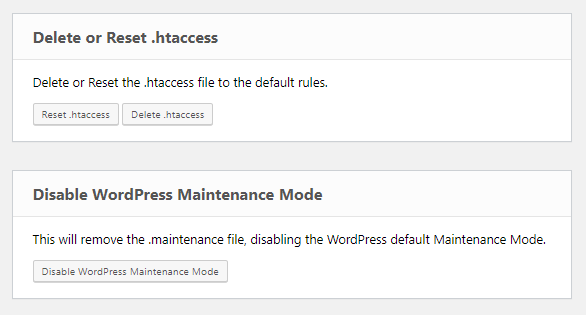Remote work was scarce in the past ten years. Homework was typically only an arrangement for families to be accommodated in particular situations. It’s not unusual for businesses to let their employees work from home for some time, or twice per week. Teleconferencing and technology for working from a distance have improved because some companies thrive on completely remote teams.
Many businesses have adopted remote work in a desperate response to the pandemic and were pleasantly surprised by its results. But, many questions how they can speed up technology advancement to ensure continuous success in business operations using remote work.
CIOs and Infrastructure leaders need to rethink their technological strategies and incorporate innovative ideas and new technologies to boost employee productivity and determine the “Future of Work.”
Specific essential skills needed to work remotely include being a self-starter, responsible, disciplined, and a well-organized problem solver. Flexibility, punctuality, communication, and a solid ability to manage time are essential for remote work.
Employees can use top-quality collaborative software when working remotely to ensure the team is aligned with their goals. The software allows employees to continue their regular work without a physical manager overseeing the team.
1. Home technology
 For starters, employers should provide employees with the tools to succeed. This could include functional laptops, headsets, tablets, and even printers. In addition, additional monitors for your desktop could boost employees’ productivity for those who work on several screens.
For starters, employers should provide employees with the tools to succeed. This could include functional laptops, headsets, tablets, and even printers. In addition, additional monitors for your desktop could boost employees’ productivity for those who work on several screens.
Remote employees typically have multiple locations to work, so they are heavily dependent on laptops and mobile devices. Making mobile a crucial element of your workflow and allowing more flexibility can increase productivity and efficiency.
It could be one of the largest investments companies have to make. However, it is considered that these technology investments are a one-time expense. Repairs and replacements in the future will be very minimal.
The investment will help your employee be productive, and employees will notice the value in your investment and appreciate them. If you provide employees with the tools needed to do their best work, they’ll be more likely to succeed.
2. Network access and security
A significant investment that employers need to make to ensure the success of remote employees is the IT team. It is not just about investing in security and network access; however, you should also invest in IT professionals who can navigate and solve the issues that arise from shifting employees from a remote workplace.
This could include setting up VPN (Virtual Private Network) access for every employee and increasing network bandwidth to handle the number of employees who access your network from afar. Also, you could look into cloud-based solutions that are more accommodating to remote locations. However, you’ll require additional security challenges to achieve this.
Although your IT department will always be essential to your company when working remotely, you’ll rely heavily on your IT staff to ensure that everything is running smoothly. This means it is crucial to ensure that your IT investment starts with the staff you choose to hire.
Office environments facilitate more communication. Moving to remote work can pose one of the most significant issues for businesses. Because communication is the critical element of being a successful business, it is crucial to invest in and support communications channels. This is why there are a variety of technologies:
Instant Messenger: Software such as Slack and GChat can significantly enhance the ability of a team to keep in touch during the day. Not only can you arrange threads of chat between projects or groups, but you can also enjoy yourself. When your employees make fun of hilarious memes or recipes, they’ll still be able to enjoy the camaraderie they’re absent at home.
3. Cloud computing

If you’ve not invested in cloud computing by 2020, similar to the companies who weren’t embracing the internet in 2000, you’re already further behind the competition. Cloud computing improves security and lets users access the virtual workspace from a distance.
Here are a few additional benefits of cloud computing:
- Cost-effective: You do not have to invest in infrastructure or equipment, and it eases the burden of the IT team.
- Scalable: You can increase or take away services as you need.
- Convenient: Remote employees can access the internet, and the cloud facilitates easy collaboration and file sharing.
Remote employees are enthused about the cloud as it provides an effortless and secure experience since they only need to sign in from any device. Once you’ve got your business up and running in cloud computing, you can enhance collaboration using cloud-based business applications like those related to project management and communications. They give remote workers the exact access to the same features that your staff in-house enjoys.
Integration of apps for remote workers requires some planning and thought; However, the benefits and benefits are well worth it.
4. Video Conferencing
 Telephone conferencing is old-fashioned. When it comes to meeting with remote employees, these days – you need video. Since remote employees typically can’t participate in in-person meetings, video conferencing has emerged as an increasingly “helpful tool” for remote and in-house employees. Cameras that use videoconferencing like Meeting Owl Pro, and Meeting Owl Pro, allow remote employees to feel like they’re in the room with their colleagues in the office.
Telephone conferencing is old-fashioned. When it comes to meeting with remote employees, these days – you need video. Since remote employees typically can’t participate in in-person meetings, video conferencing has emerged as an increasingly “helpful tool” for remote and in-house employees. Cameras that use videoconferencing like Meeting Owl Pro, and Meeting Owl Pro, allow remote employees to feel like they’re in the room with their colleagues in the office.
Platforms such as Zoom and Google Hangouts provide a necessary method of communication that allows you to be able to see your colleagues during a meeting. However, while calls can be sufficient, employers will notice that video conferencing is more entertaining. Beyond looking at the faces of colleagues and team members, participants can discern nonverbal signals that will improve communication among the group.
It is an investment in the well-being and happiness of your employees, which is worth it.
Conclusion
Today’s remote workforce requires the right tools to become productive and achieve their goals with the help of modern technology to meet both of these goals while simultaneously establishing your business as an innovative workplace.





Comments are closed.